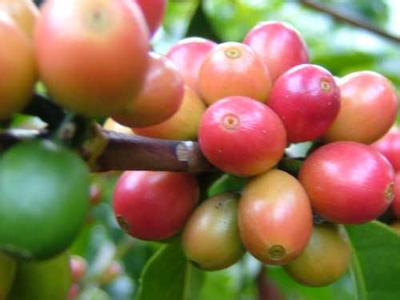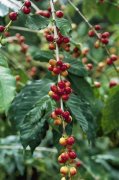Processing of high-quality coffee beans by wet treatment
The wet process requires more capital investment and effort, but it helps to maintain the quality of the coffee beans and reduce damage. The main difference between the wet and dry methods is that the pulp is immediately separated from the coffee beans during wet treatment, rather than drying them out as in the dry method.
The pulp is separated in the separating machine in such a way that the fruit is crushed in a machine having a fixed surface and a movable surface or in a machine having movable rods, whereby the pulp is separated from the coffee beans. In order to guarantee the quality of the coffee beans, the separation of the pulp must be carried out as soon as possible after harvest, ideally within 12 hours, but no more than 24 hours. If the coffee beans are left for too long, the pulp becomes difficult to separate from the coffee beans, resulting in incomplete separation and possible damage to the coffee beans.
The peel and pulp separated from the coffee beans will be washed away with water. The rinse tank is designed to have the function of separating light, tender coffee beans from thick, ripe coffee beans. Such separation can also be accomplished by an Aagaard classifier. A coffee grower in Norway, Ogl designed a device to sift coffee beans through filters into a large container of water while growing coffee in Kenya. The large, plump beans sink first, while the lighter beans stay in the larger container. During this process, water can be recycled.
The next step is the most basic fermentation, which uses enzymes to separate the creamy mucilage covering the endocarp. Coffee beans are stored in the fermenter for about 12 to 36 hours, depending on the ambient temperature, the thickness of the slurry, and the enzymes. When this process is complete, the endocarp around the coffee bean is no longer slimy but has a pebbly feel.
Quality control throughout the wet process is critical to prevent coffee beans from spoiling, as even one bean spoils, potentially damaging the entire bean. For this reason, the equipment used must be cleaned daily to ensure that no impurities remain before the next round of processing.

Important Notice :
前街咖啡 FrontStreet Coffee has moved to new addredd:
FrontStreet Coffee Address: 315,Donghua East Road,GuangZhou
Tel:020 38364473
- Prev

Processing and drying of high-quality coffee beans
There are two ways to prepare coffee beans for the baking process. The method chosen has a significant impact on the final price and quality of coffee. The cheapest method of processing is called drying, which is used for lower-grade coffee beans, while higher-quality coffee beans are processed by wet treatment. Drying is used for unwashed coffee beans. Wet treatment used for thorough cleaning or semi-cleaning.
- Next

Technology of high-quality coffee beans the processing process of coffee beans
After the wet treatment, the coffee beans are still preserved in the inner pericarp, which still contains about 15% water. The endocarp must be dried to a moisture content of about 11% to ensure that coffee beans are stored in a stable and safe environment. Water content is critical, because if Arabica beans are overdried to a moisture content of 10%, they will be lost
Related
- What is the meaning of lactic acid fermentation with coffee bean treatment?
- How to judge the state of foam by sound?
- How does the latte pull out the unicorn pattern? Come to get for a little trick to improve the flower pull!
- Will flower pulling affect the taste of the latte?
- Do you know the history of coffee?
- The difference between honey treatment and sun washing what is raisin honey treatment?
- What kind of milk can a novice use to make coffee foam to keep the foam longer? The correct method and skills of milking tutorial sharing
- Why do washed coffee beans taste sour? Flavor characteristics of washed Coffee
- Introduction to the skill of how to practice the size and height of water injection around the circle of hand-brewed coffee
- How do beginners practice coffee flower drawing from scratch?

